#Long Day's Journey Into Night (1962)
Text
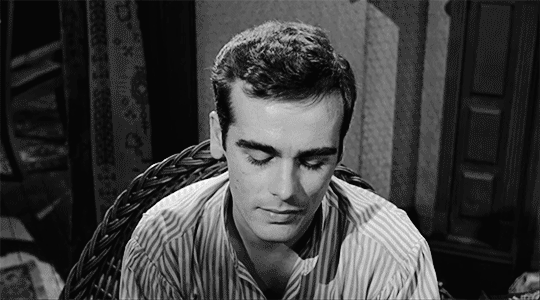
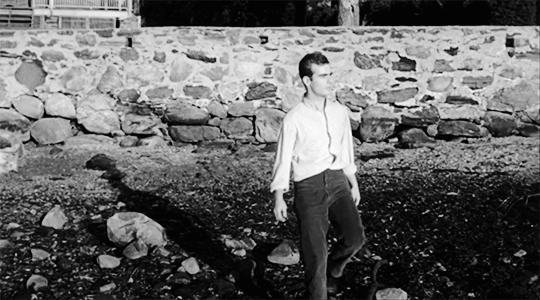
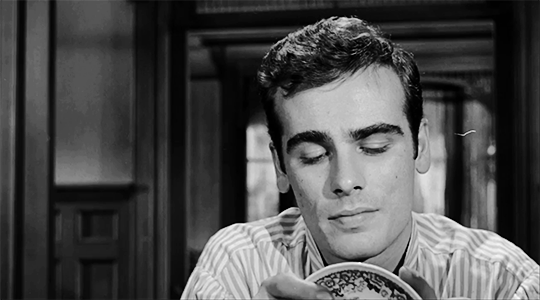
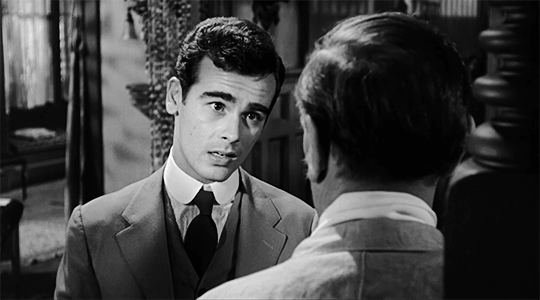

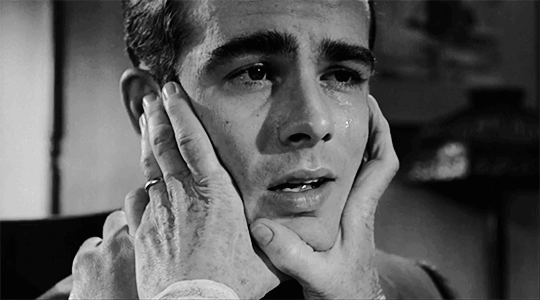

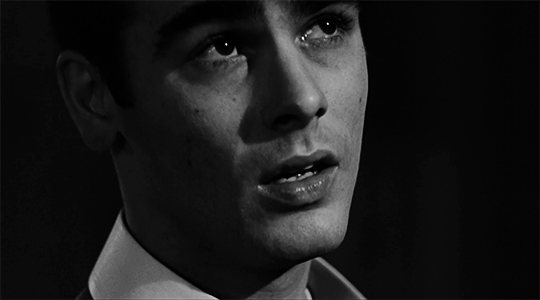


Dean Stockwell in Long Day's Journey Into Night (1962), dir. Sidney Lumet
#you know when people talk about an actor's “most beautiful” film — the one in which they were at their peak loveliness#always lovely — but this was dean's#so reminiscent of james dean for me in this#dean stockwell#long day's journey into night#sidney lumet#1962#m*#f: ldjin#p: dean stockwell#d: sidney lumet#m: gif#w23*
366 notes
·
View notes
Note
if you're still doing the ask meme: what are the top 5 or 6 things someone should watch/read/listen to, to understand you?
Ohhhhh.... This is gonna be a hard one.
1. Tamora Pierce's Tortall series, particularly the Song of the Lioness quartet, the Protector of the Small quartet, and the Provost's Dog trilogy. I had already been a big King Arthur, Robin Hood, and Redwall fan when I found her work, but these books really clicked in a lot of my mindset and moral code. Big old knight nerd.
2. Quantum Leap! I mean, c'mon, time traveling while trying to set right what over went wrong, being held together by a devoted friendship, and just generally trying to help people? Yep, that's my speed!
3. The Irish Rovers' album, The Unicorn, paired with a Best of The Dubliners album of some sort. My mom's side of the family is 100% Irish American and my grandma raised me a good portion of my life. This is the music I grew up on and that makes me think of her. I miss her deeply.
4. Star Wars, Back to the Future, The Princess Bride, and Monty Python and the Holy Grail. I can't quite explain why these are paired in my head, but they're both series that I grew up watching with my dad and formed a bit of my humor and interest in fantastical tales
5. Snoopy the Musical. Not You're A Good Man Charlie Brown, Snoopy the Musical! I had to figure out something for a theatre experience and this is one that is easiest? I dunno, it's over I experienced when I was really little. My mom was the stage manager and lighting designer and I would follow her around as a 3 year old with cables ahaha! I ended up becoming a stage manager when I was 12 and the rest is sort of history! I could tack on all the shows I've shadowed thanks to my Broadway SM uncle, Gary, or other shows I've worked if folks are interested at all.
6. Singin' in the Rain! Gene Kelly... Yeah, this and a bunch of his other movies are my favorites. Another thing my grandma introduced me to ☺️
Cheated a bit but oh well 😉
#personal#asks#runner ups:#Henry V (1989)#Long Day's Journey Into Night (1962)#Macbeth#Arcadia by Tom Stoppard#Emma#The Scarlet Pimpernel#literally so many others
3 notes
·
View notes
Text




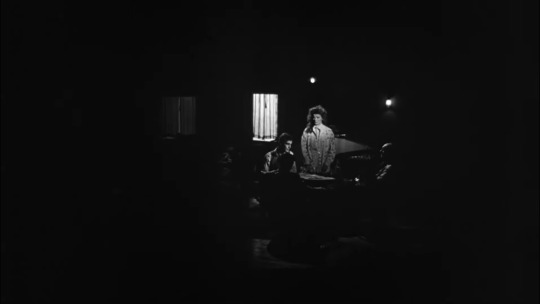
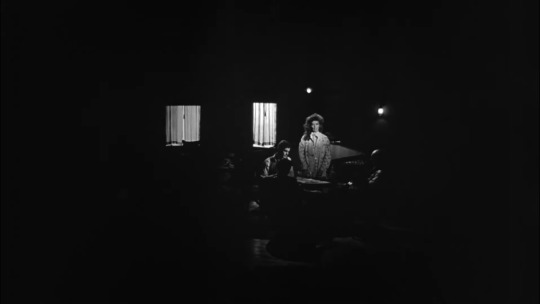
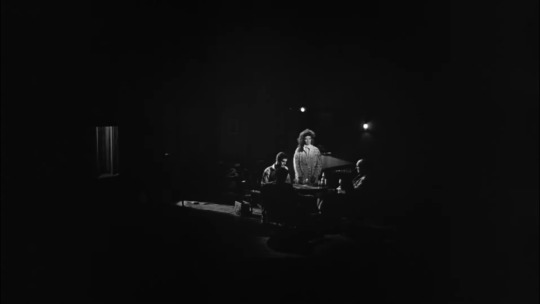

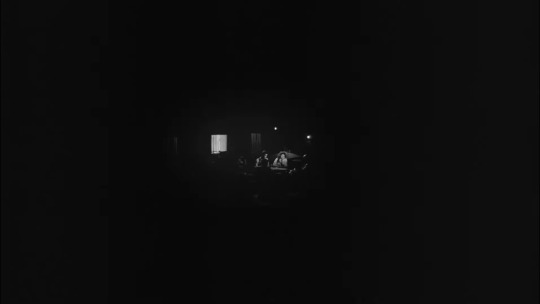
Long Day's Journey into Night (1962)
Jason Robards as Jamie Tyrone
Katharine Hepburn as Mary Tyrone
Ralph Richardson as James Tyrone
Dean Stockwell as Edmund Tyrone
directed by Sidney Lumet
cinematography by Boris Kaufman
#long day's journey into night#jason robards#katharine hepburn#ralph riachardson#dean stockwell#jamie tyrone#mary tyrone#edmund tyrone#sidney lumet#boris kaufman#lumet and kaufman went off#eugene o'neill
25 notes
·
View notes
Text
Secret life of the Beatles and the man who got them groupies and pot
Mal Evans was the Beatles’ fixer, roadie and confidant, but little is known about the man the Fab Four adored. Now a new book reveals all
For eight years, Malcolm “Mal” Evans was, in his way, as fundamental to the Beatles as Brian Epstein and George Martin. He was their long-time roadie and personal assistant, sometime lyricist, occasional performer and regular fixer at the height of the group’s fame and beyond.
Over the years he became friend and confidant — attending their weddings, fending off fans, procuring groupies, accompanying them on holiday, joining them on acid trips, going to India on their infamous pilgrimage to see the Maharishi Mahesh Yogi. But Mal’s dedication to the “boys” and his own desire for stardom took its toll, leading to the end of his marriage and his untimely death in January 1976.
Until now, Mal’s life remained shrouded in mystery. Drawing on hundreds of exclusive interviews and with full access to unpublished archives — including his personal diaries, manuscripts and memorabilia which for 12 years were forgotten in the basement of an American publishing house — this is the first complete portrait of a complicated figure at the heart of the Beatles’ story. Just when you thought there was nothing new to know about the Fab Four, here comes the extraordinary tale of one ordinary man right in the middle of it all.
AT 27, MAL HAD FIVE YEARS on John Lennon and Ringo Starr and even more on Paul McCartney, who had turned 20 in June 1961, and George Harrison, still a teenager at 19. Mal – was the odd man out in more ways than one. He held a real job, as a telecommunications engineer for the General Post Office, and he had a home and a family. With his wife, Lily, he lived in Liverpool’s Allerton district, where they were raising their 15-month-old son, Gary.
It was a simple twist of fate that landed Mal behind the wheel of the band’s Ford Thames van on a January day in 1962. Neil Aspinall, the Beatles’ road manager, had fallen ill with flu. He was hardly the only person felled during that severe winter. During the last week of December, a blizzard swept across England and Wales, leaving snow drifts of up to 20ft in its wake.
By the time Mal and the Beatles began the long drive to London, around midday on Monday, January 21, the van’s brakes had begun to slip. During the early leg of their journey, brakes didn’t really matter. But it was on the journey home that disaster struck in the middle of the night. As Mal drove along a quiet rural road, the windscreen “cracked with a terrible bang”, as he’d write later in his Post Office Engineering Union diary. With the windscreen splintered, Paul observed as Mal “put his hat backwards on his hand, punched the windscreen out completely and drove on”.
Mal was left to contend with the gale-force winds now pummelling the van’s interior. The bandmates gathered up stray caps and scarves and wrapped them about their beleaguered driver, who had pulled a paper bag over his head to battle the cold. “It was perishing,” John later recalled. “Mal had this paper bag over his head with just a big split in it for his eyes. He looked like a bank robber.” Meanwhile, John, Paul, George and Ringo huddled together in the rear of the van, sharing a bottle of whisky while stacked one atop the other to generate much needed warmth. “And when the one on the top got so cold it was like hypothermia was setting in,” Ringo recalled, “it was his turn to get on the bottom, and we’d warm each other up that way, and keep swigging the whisky.” It was, in Paul’s words, “a Beatle sandwich”.
All the while, Mal and the boys maintained a steady banter to stave off exhaustion. As the Big Freeze raged — swirling both inside and outside the van — the Beatles regularly pestered their driver about how much further they had to go. “[Two hundred] miles to go!” Mal would reply, referencing the approximate distance between Liverpool and London. In the years to come, “It became our own private joke, and ‘200 miles to go, Mal’ was heard whenever things were tough.”
DURING HIS YEARS WITH THE BAND, Mal discovered that the best way to avoid being ribbed by the boys was to be ready for virtually anything. To this end, he carried around with him an ever growing doctor’s bag to meet the Beatles’ every possible whim. It was swollen with musical instrument paraphernalia — plectrums, guitar strings and the like — along with household items such as aspirin, chewing gum, a torch, crisps, biscuits, tissues and cigarettes, of course. As the years went by, he had another piece of luggage, which he lovingly called his “dope bag”: a brown suede bag with an om sign prominently displayed, complete with freshly rolled joints.
This began after Bob Dylan dropped by their hotel in New York in 1964 during their first tour of North America. Not long after Dylan’s arrival, the Beatles offered their guest a sample from their motley collection of pills — Drinamyls and Preludin (both uppers), mostly. But Dylan wasn’t having it, instead suggesting “something a little more organic”. At first, Brian Epstein demurred, sensing the Beatles’ apprehension.
That’s when Dylan said, “But what about your song — the one about getting high?” At that, he began singing the middle eight from I Want to Hold Your Hand: “And when I touch you, I get high, I get high.”
John quickly interjected: “Those aren’t the words. It’s ‘I can’t hide, I can’t hide’.”
Ringo tried Dylan’s marijuana first. A few puffs from Dylan’s joint left him smiling and suddenly marvelling at the way the ceiling seemed to float down onto him. Soon, they were all stoned. George recalled that, “We were just legless, aching from laughter.” And for Paul especially, the Beatles’ first brush with the devil weed seemed not only mind-blowing, but a moment of great import. To him, it felt exactly like the kind of experience that should be captured for posterity. Having dutifully provided his roadie with a pencil and paper, Paul ordered him to, “Get it down, Mal, get it down!” Despite being quite stoned in his own right, Mal managed to record the Beatle’s most insightful thoughts. The next morning, Mal retrieved the musings, which boiled down to a single sentence: “There are seven levels,” his notes read. Roadie? Bodyguard? Fixer? Now Mal could add “amanuensis” to his evolving portfolio.
AS EARLY AS 1963, it was clear that there was an unusual zeal among Beatles fans, one unbounded by the conventional social behaviours of the day. “As if attacked by a virus that changed their moral standards, teenage girls wanted sex with the Beatles and they didn’t care how they got it,” wrote Tony Bramwell, Brian Epstein’s assistant. “When they tried to grab a live one, crawl through windows or hide in wardrobes, they were sorted out by Mal and Neil Aspinall like M&Ms, to be sampled and tasted first. Brian — who was puritanical where his protégés were concerned — would have had a fit had he only known, but he was kept totally in the dark.”
At its height, the stage and its environs would take on the look of a battle zone. “Unconscious teenagers were being dragged out of the audience,” Mal wrote, describing a gig in San Francisco in 1965, “and we hauled them on to the stage for safety. Some were in a terrible state, bruised, battered, cut and unconscious. Their clothing was torn and their hair dishevelled. We put them backstage, where the casualties mounted into the hundreds as the show went on. A chain of policemen organised to get them to the first aid centre.” At one critical juncture, a fan hurled a metal folding chair onstage. Eventually, the situation became simply too dangerous for the band to continue. “It’s no good,” Brian was told. “You’ll have to cut the show. Only one more song.”
As the casualties mounted, Mal prepared to usher the Beatles to safety. “Sobbing girls lay slumped against the walls or huddled in the corners,” he wrote, “and I caught a glimpse of Joan Baez trying to revive some of them with smelling salts. Every artist in the show was backstage helping out and trying to get the fainting youngsters back on their feet.”
When the concert mercifully ended, the Beatles dropped their instruments, ran from the stage and climbed into an enclosed freight truck to make their escape. Afterwards, “Pandemonium broke out in the auditorium,” Mal wrote, “and I thought the whole place was going to collapse around us. But somehow, the police managed to keep the tide at bay, all the exit doors were thrown open and people were hustled out. The scene behind them was of devastation, with seats overturned, people still trying to get onto the stage and more people fainting.”
By the next morning, the Beatles and their entourage were winging their way back to London. But the perils of the band’s second North American tour would not be so quickly forgotten. For his part, Brian Epstein would chalk up the chaos and violence to lax security. But it was more than that, Mal realised. He had long felt that there was a dark side to Beatlemania, that not all the attendant hysteria could be understood as the simple byproduct of fandom.
Meanwhile, as the tours mounted up, for Mal the sudden availability of sex, seemingly free from consequences, represented an irresistible bonanza. After a lifetime of self-doubt over body issues and inveterate shyness, he simply couldn’t control himself.
“Big Mal was a demon for sex,” Tony wrote. “His stamina would have been remarkable in a harem. In the flat, sooty back streets of Birmingham or Manchester, he was a stud straight from the Kama Sutra. Like sacrificial virgins, a lot of the girls willingly accepted that they would have to do it with Mal to get to John, Paul, George or Ringo, and Mal knew it.”
Years later, John would liken the Beatles tours to Fellini’s Satyricon, suggesting that their worldbeating jaunts were a fantasia of sexual decadence. Lloyd Ravenscroft, the Australian tour manager, confirmed that the band members “had girls in their room, yes. That was in the hands of Mal Evans, who was very good at picking the right girls. It was very discreet and well organised.”
Mal became “a suave and smooth procurer”, in the words of Larry Kane, a broadcast journalist who was embedded with the band on one of their US tours, “able to spot a target with incredible intuition. It was as though he could pick up on the scent of women who were willing. Only rarely did I see him alone in a hotel corridor. At least his flair for recruiting included an understanding of the difficulties the Beatles could face if any female companion was underage or wronged in any way. If one could get an Oscar for safely procuring women, Mal Evans would have received the lifetime achievement award.”
Back home, Mal’s reunions with Lil and Gary were tempered by the infrequency of his correspondence and by the odd scraps of paper his wife had discovered in his suitcase — addresses and telephone numbers, invariably written in a feminine hand, from the “pen pals” he would meet on the road. Mal brushed off their significance, but Lil knew better. “It used to break my heart,” she recalled.
By 1968 — a year in which he had tried in vain to remake himself as a record executive — Lily’s mistrust of her husband had reached a fever pitch. By this point, she wasn’t just finding “silly groupie letters” in his suitcase, but also the occasional stray pair of knickers and other telltale signs of infidelity. She recognised that Mal was being seduced by overwhelming forces, impulses with which she could hardly begin to compete. “One minute he would be in Hollywood,” she said. “The next day he’d be back here cleaning out the rabbit hutch.”
Mal had emerged as a celebrity in his own right, thanks to publications such as The Beatles Book. “It was OK for him,” Neil Aspinall recalled, “going out in front getting the instruments ready. Dead popular he was. As they cheered and shouted at him he talked to them and made jokes. He didn’t have to physically fight them off, once it started.”
All shook up: the Fab Four meet Elvis
ON THE NIGHT OF AUGUST 27, 1965, Mal and the boys met Elvis Presley at the King’s Bel Air mansion. The 30-year-old superstar was in town to shoot the film Paradise, Hawaiian Style.
Prior to his coveted meeting with the King, Mal spent time with Colonel Tom Parker at his Paramount Studios office, where the roadie was lavished with gifts, including a gold-plated cigarette lighter and, to his glee, a white bathrobe emblazoned with “Girls! Girls! Girls!”. Mal not only appreciated Parker’s generosity, but recognised that he possessed “one of the most astute showbiz brains in America”, adding that, “He has wrung every dollar he can out of the Elvis situation — and who can blame him?”
As Mal was lounging in the Colonel’s office that day, the telephone rang. “That was a news agency, Mal,” Parker said. “It looks as though word has got out about Elvis and the boys meeting tonight. There’s a story in the London Daily Mirror. Now Reuters wants confirmation.” At that moment, Mal’s heart froze. “For a moment, I thought Parker was going to call the whole thing off.”
But the Colonel wasn’t to be deterred. With the so-called Memphis Mafia — a group of Presley friends and employees who served and protected the King — at his beck and call, Elvis’s manager instigated a complex system by which they changed vehicles several times before arriving at Benedict Canyon. As the Colonel looked on, Mal, Neil Aspinall, the Beatles’ press agent Tony Barrow and the Beatles ducked into a black limo. “For once,” Mal later quipped, “John, George, Paul and Ringo were ready to leave on time, and they climbed into the waiting cars at the bungalow bang on the dot.” Shouting, “Roll ’em!” out of his car window, the Colonel’s vehicle snaked its way through Hollywood, the convoy followed by a police motorcycle unit. By 10pm, the motorcade had arrived at Elvis’s house at Perugia Way. Incredibly, the Colonel’s plan had worked.
Mal was beside himself, feeling a combination of reverence and utter shock. After being served a large Scotch and Coke by one of the King’s minions, Paul beckoned Mal to meet his idol in the flesh. “Presley turned, and we shook hands. ‘This is your number-one fan, El,’ said Paul. ‘And he’s with us.’” Mal was thunderstruck by the sound of the King’s “strangely quiet voice” as he said, “Sure pleased to meet you,” to the roadie.
As the evening progressed, Mal marvelled at Elvis’s luxurious home, with its well-stocked cocktail bar and lounge, its thickly carpeted rooms, and, in the den, a massive fireplace with a copper chimney disappearing into the ceiling at the centre of the room. “Pretty soon the record player was working full blast,” Mal wrote. “Elvis played a whole lot of albums, many of them the Beatles, but modestly, perhaps, did not play any of his own. The noise was terrific, the drinks were flowing, the talk was animated, and, as I say, it was just like being at home with the lads from Liverpool.”
Eventually, Elvis picked up a bass guitar that was plugged into an amp positioned near the television set. “He began to strum away on the thing, playing quite ably, but he insisted that he was only learning,” Mal wrote. “Keep practising, fella. You’ll get to the top yet,” Paul quipped. As Mal looked on, “the most fantastic impromptu unrecorded session of all time” ensued when “El found some guitars for John, George and Paul and a set of bongo drums for Ringo, and they began to make the place rock with an hour of improvised beat music. It was fabulous.”
“There was only one hitch during the little concert the boys put on,” Mal later reflected. Nobody had a plectrum. “Mal’s got a pick,” said Paul. “He’s always got picks. He carries them on holidays with him.” Crestfallen that he had neglected to bring his well-travelled doctor’s bag, along with its ready supply of guitar picks, Mal scurried to the kitchen, where he fashioned pieces of plastic cutlery into makeshift plectrums.
Ringo and Mal tried their hand at pool, losing four straight games to members of the Memphis Mafia, while, “John lost $9 at roulette with Colonel Parker and Brian Epstein, who had joined us on getting back from New York.” In one of Mal’s favourite memories of that night, John pretended to be a reporter.
“Once, when I was talking to El, sitting on a settee, John came screaming up to us and jabbed an imaginary microphone under El’s nose and began to fire off a string of meaningless questions — which I must say were a pretty accurate take-off of some of the daft things that interviewers ask at our own press conferences. ‘What are you going to do when the bubble bursts, Elvis?’ he asked. ‘What toothpaste do you use? What time do you go to bed? Do you like girls? Who’s your favourite artist?’ ‘Yeah, yeah,’ chuckled El. ‘I’ve heard ’em all before.’”
Escaping from guns and a mob in Manila
ON THE MORNING OF JULY 3, 1966, the Beatles and their entourage left for the Philippines by way of Hong Kong. “Manila was our next port of call on our way back to England,” Mal later remembered, “and it was here, for the first time in my life, I was to experience real fear.” As it turned out, things were cockeyed from the outset. After attending their usual post-arrival press conference, John, Paul, George and Ringo were hustled out of a rear entrance and taken to the harbour, where they were ushered aboard a motor yacht.
“It was really humid, it was Mosquito City,” George reported, “and we were all sweating and frightened. For the first time ever in our Beatle existence, we were cut off from Neil, Mal and Brian Epstein. There was not one of them around, and not only that, but we had a whole row of cops with guns lining the deck around this cabin that we were in on the boat. We were really gloomy, very brought down by the whole thing.”
Things would get worse. After Brian succeeded in securing the Beatles’ return to the mainland, they ensconced themselves in the opulent Manila Hotel for the night. What the members of the band’s entourage didn’t know was that the Beatles had received an invitation from Philippine president Ferdinand Marcos and First Lady Imelda Marcos requesting their appearance at Malacanang Palace at 11 o’clock the next morning. Only, Brian and the Beatles never laid eyes on it. After an incident in America, at the British embassy in Washington, in February 1964, when the band felt they had been snubbed by upper class, titled guests, official requests for the Beatles’ presence were routinely ignored. Instead, the group went about their business in Manila, performing the first of two shows for 35,000 spectators at José Rizal Memorial Stadium and another audience of 50,000 later that same day.
For the moment, the band and their entourage hadn’t felt any blowback from having snubbed the First Lady, save for scathing news reports on Filipino TV. That night, the promoter arranged for a lavish party at the hotel, with numerous prostitutes on hand to cater to the boys’ needs. On the morning of July 5, Mal began to sense trouble when a pistolpacking member of the promoter’s staff requested autographed pictures of the Beatles. “I was in the middle of explaining that I had given away most of the photographs,” Mal wrote, “keeping a few for the plane crew on the way home, when I was cut short by the same gentleman brandishing a gun in my face and repeating the demand. I couldn’t give them to him fast enough. This was the prelude to a morning of terror.”
Mal could feel the tension rising as he sought out a truck to transport the luggage and gear to the airport. “The feeling in the air was that nobody wanted to be associated with us,” he wrote. “On arriving at the airport, I was informed by the police on duty that I couldn’t park near the airline gate, but in the normal parking area like ordinary people. Their attitude being, ‘Who do you think you are?’” When the band and their entourage arrived at the airport, Mal discovered that no one would help them, save for the KLM airline attendants, who processed their baggage.
Everything went to hell when they began making their way to the international lounge, only to be intercepted by a dozen Filipinos. “It was obvious that they were looking to cause trouble, and quite prepared to beat the hell out of us, because of the fiasco the previous evening with the First Lady,” Mal wrote. “They were standing on our toes, jabbing us with elbows, generally giving us a bad time, and the last thing we could do was hit back. Up to that point, they were just a nuisance and making us feel very uncomfortable. I would give my right arm for any of those boys, but under these circumstances, it was most inadvisable to retaliate in any way whatsoever.”
It was chauffeur Alf Bicknell who could no longer contain himself. Daring to strike back at the assailants, he was viciously attacked, ending up flat on the airport floor with a pair of cracked ribs. Despite his large size, Mal sustained numerous blows, as did Ringo, who was knocked down with a swift uppercut and crawled away as assailants kicked him. Things seemed to get worse as the group approached customs, where John and George were punched and kicked. Paul managed to avoid the brunt of the violence by sprinting ahead. Along with Alf, Brian suffered the most, sustaining a sprained ankle during the mêlée. At one point, Mal realised he was bleeding from his leg.
Mal would never forget the surrealness of walking across the tarmac after the violence they had experienced in the terminal. The ruffians were still in evidence, hurling insults and epithets as the Brits made their way to the waiting KLM plane. But the fans were there too, shouting, “We love you, Beatles!” and tossing bouquets of flowers at their feet.
Once on board the plane, Mal wrote, “We all gave a sigh of relief, thinking we were safe on neutral territory. We were all shaking, beads of fear running down our faces.” That’s when immigration officials boarded the plane, demanding that Mal and Tony Bramwell follow them back to the terminal.
In the immigration office, they found themselves once again at the whimsy of the mob, being jostled, pushed and shoved as officials demanded they fill out new immigration forms. As TV crews recorded their every move, the two struggled to complete the forms, their hands visibly shaking in terror. And then, just like that, they were being led back to the plane, once again experiencing a strange gauntlet of violence and insults on the one hand and the goodwill of the assembled Beatles fans on the other. After some 40 intense minutes away from their friends, Mal and Tony were back in their seats. “The last words we heard before the doors closed were, ‘We love you, Beatles,’” Mal wrote.
Mal Evans died on January 4, 1976. He was shot by the police in a California apartment as he brandished a rifle, having taken a suspected Valium overdose. His diaries and memorabilia lay on the floor next to him.
Extracted from Living the Beatles Legend by Kenneth Womack (Mudlark, £25), published on November 14.
(source)
28 notes
·
View notes
Text
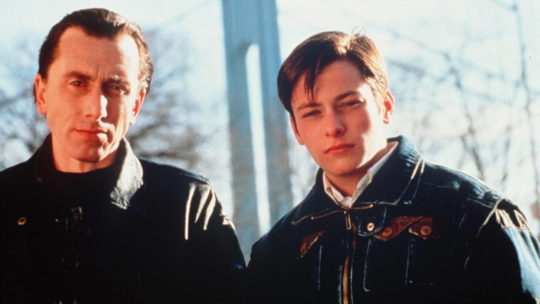
Tim Roth and Edward Furlong in Little Odessa (James Gray, 1994)
Cast: Tim Roth, Edward Furlong, Moira Kelly, Vanessa Redgrave, Maximilian Schell, Paul Guilfoyle, Natalya Andrejchenko, David Vadim. Screenplay: James Gray. Cinematography: Tom Richmond. Production design: Kevin Thompson. Film editing: Dorian Harris.
James Gray's debut film, Little Odessa, is a chilly movie about a dysfunctional family, set in wintry Brighton Beach, the Brooklyn neighborhood adjacent to Coney Island. Gray uses the seasonally shut down amusement park and boardwalk as a correlative for the frozen lives of the Shapira family, for which a reviving spring will never arrive. The film won more favor from European critics, winning an award at the Venice Film Festival and praise from director Claude Chabrol, than it did from Americans, who have less taste for grimness. And Little Odessa is almost unrelievedly grim in its account of what happens when the older son, Joshua, returns to the home where his mother, Irina (Vanessa Redgrave), is dying of cancer. He hates his father, Arkady (Maximilian Schell), who is having an affair with a younger woman while tending to Irina in her final days. Joshua feels close, however, to his teenage brother, Reuben (Edward Furlong), who dutifully helps his father run a small newsstand and look after his mother, but he has secretly stopped going to school, hiding the letters to his parents from the school in his sock drawer. Joshua is a hitman for the Russian mob. He has avoided returning home, but he can't refuse an order to rub out an Iranian jeweler with a store located in Brighton Beach. There are violent consequences not only for Joshua's target but also for his own family. The Shapira family is not so poetic and articulate as the Tyrones of Long Day's Journey Into Night (Sidney Lumet, 1962) but they have a similar lacerating candor that gives actors free rein to perform. And it's mostly the performances that justify spending 98 minutes with them (as compared to the nearly three hours we spend with the Tyrones in Lumet's film). Redgrave, as always, is a marvel, all fragility and grit and love for her family, and Furlong demonstrates the kind of promise as an actor that his personal problems have never allowed him to fulfill. I think Schell is somewhat miscast as the father, who gets the blame for what has happened to his sons, but he gives the role substance if not the undertones of selfishness and desperation that it needs. The real star is Roth, an undervalued actor who always performs to the mark and beyond. Gray's screenplay is a touch too melodramatic, especially in the final confrontation of Joshua and his father, but with the help of Tom Richmond's cinematography and Kevin Thompson's production design, he maintains the oppressive mood and gloomy milieu effectively.
9 notes
·
View notes
Photo
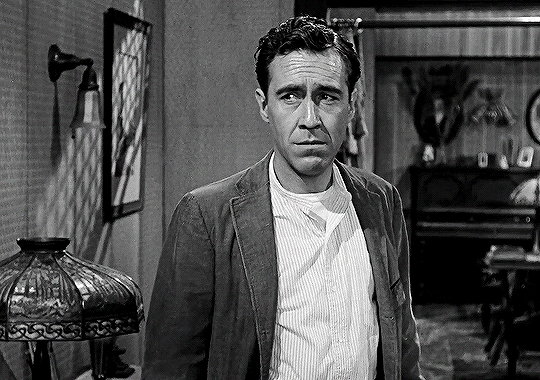

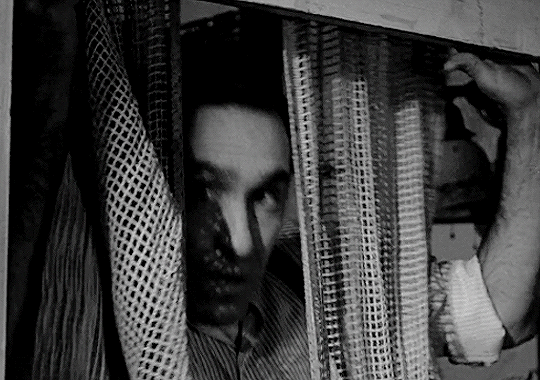

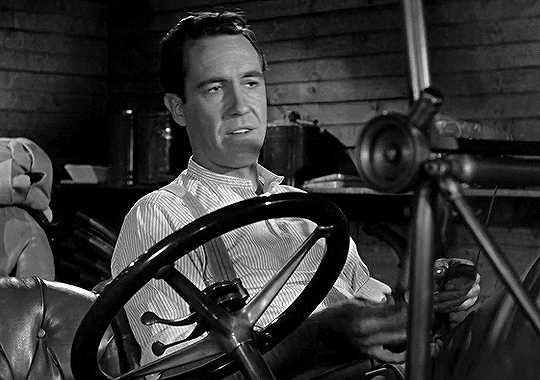
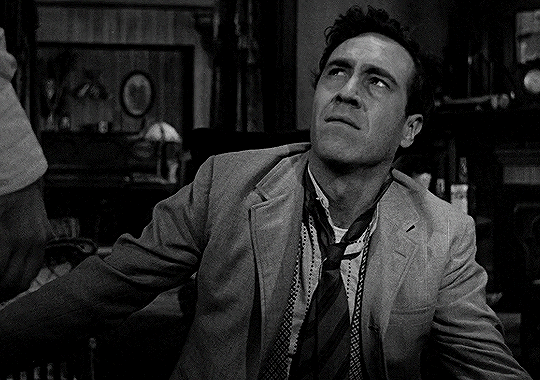

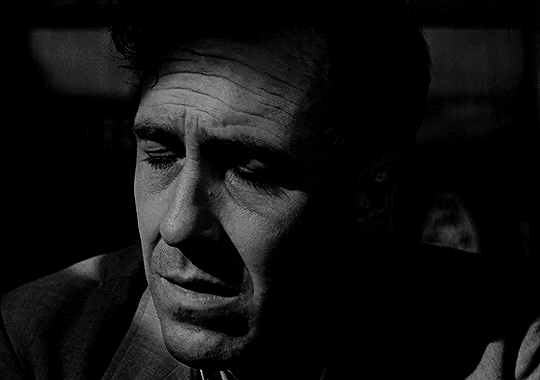
Jason Robards as Jamie Tyrone in Long Day’s Journey Into Night (1962) Dir. Sidney Lumet.
#jason robards#jason robards jr#long day's journey into night#sidney lumet#eugene o'neill#1960s#movie edit#gif edit#classic movies#film edit#gifs by me
35 notes
·
View notes
Text
get to know the author !

name: rubi! ive had two or three aliases over my time online, rubi's just the one that feels most like second nature to me. i also adore taking to some variations of my tag. ( ie. ivana, ruben, ru, etc. )
preference of communication: im almost always on disc.d ( dearest creature#1962 - feel free, im literally always open to rant about dynamics, ideas n whatnot n id absolutely adore talking to some of you ♡ ), alongside tw.tter, since its easier for me to keep tabs on with mobile. anything ooc is always easier to do with me through either, i hate tumblr ims.
most active muse: marisa's been rattling around in my brain for a good while now, and even when im not writing for her ill normally have an idea or two about her simmering. i haven't had this much enjoyment from dissecting and delving into a muse in a very long time, along with the fact my perception of her is always changing with every re-read / rewatch / discussion. bedelia is also always around to me even if im not currently writing her, she's very fun to play off of and even gives me a good grounding point to bounce from if I'm stuck with other muses.
experience / how many years: about eight years or so now ? i've always enjoyed writing since i was younger so developing that through my own writing and picking up muses while growing up has been a nice learning journey.
platforms you use: tumblr, tw.tter and disc.d.
best experience: when my mutuals and i are writing something more prolonged n they come at me with something absolutely devastating. got hit with something someone was brewing for weeks once unknowns to me and oh boy connecting the dots left me a wreck.
rp pet peeves: people who create certain muses and expect their dynamic to adhere to your muse without any regard for your portrayal. im always for original muses, but not talking to me first when certain muses of mine just. do not fit certain dynamics is a big no no.
fluff, angst or smut: depending on the context i adore fluff and angst equally. i thrive off of writing domestic fluff just as much as i would heartbreak or any other darker subject. i love the bittersweet nature of lyra and marisa's first time bonding or AUs where things are more domestic for them just as much as her reconciliation with asriel, or the intensity of the torture scene with the witches. if it exists and it hurts or its tooth-rottingly sweet i want it all. smut is a sore spot for a few reasons, alongside the fact it just isn't what i care about / have focus on for my writing or my muses, so it would be very, very rare for me to even consider, and even then only ever with close writing partners.
long or short replies: it can really depend on the day and what muse im writing. i thrive more with longer replies for characters like marisa, because it's easier for me to find a voice and get into her head. short, bantery replies normally leave me lacking in what i feel a character is like, and shorter comedic interactions just aren't what i'd consider to be my strong suit in writing, so i linger towards longer replies. the biggest thing about long replies is i burn out very easily though, so i try my best to find a middle ground.
best time to write: at night, on weekends or early morning before my classes. any time i have to myself where i can just draft things for a little bit, ideally.
are you like your muse(s): christ i hope not, im way too sensitive to take to being called moral filth lmfao. i think what's so compelling about marisa is i'd love to inhabit some of her strengths, though. i adore her guile, and her femininity and her ability to take everything head on. she's so unbelievably driven and intelligent in what she does and okay come on im a lesbian why do you think im really here writing for her.
tagged by: @secondbetrayer, @evebeforethefall ( thank you. ♡ )
tagging: @toxicmalicex, @viciousgold, @dustserpent, @mryscross, whoever else sees this and wants to. ♡
7 notes
·
View notes
Text
about to watch long day's journey into night (1962) for 26 year old dean stockwell. will report back
4 notes
·
View notes
Note
ok for the ask game, what are 5 favorite movies of yours?
oh man. oh man. hm.
in no specific order:
paris, texas (1984)
suburban gothic (2014)
long day’s journey into night (1962)
adam (2009)
married to the mob (1988)
#3 dean stockwell movies because unfortunately i’m brain rotted at the moment#he’s not the main character in paris texas though. i love that movie a lot#asks
5 notes
·
View notes
Text
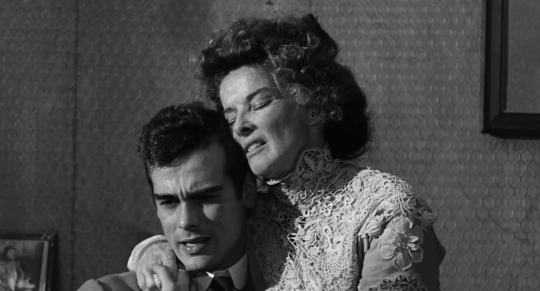




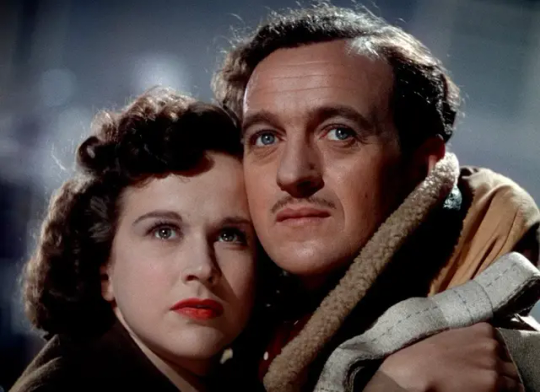

Favorite films watched in June & July 2023 (pt. I):
Long Day's Journey Into Night (1962), dir. Sidney Lumet
I Never Sang for My Father (1970), dir. Gilbert Cates
Paths of Glory (1957), dir. Stanley Kubrick
Death in Venice (1971), dir. Luchino Visconti
The Manchurian Candidate (1962), dir. John Frankenheimer
A Matter of Life and Death (1946), dir. Michael Powell and Emeric Pressburger
Charulata (1964), dir. Satyajit Ray
#w23*#2023 in film#films of 2023#long day's journey into night#sidney lumet#I never sang for my father#paths of glory#stanley kubrick#death in venice#luchino visconti#the manchurian candidate#john frankenheimer#a matter of life and death#charulata#satyajit ray
31 notes
·
View notes
Text
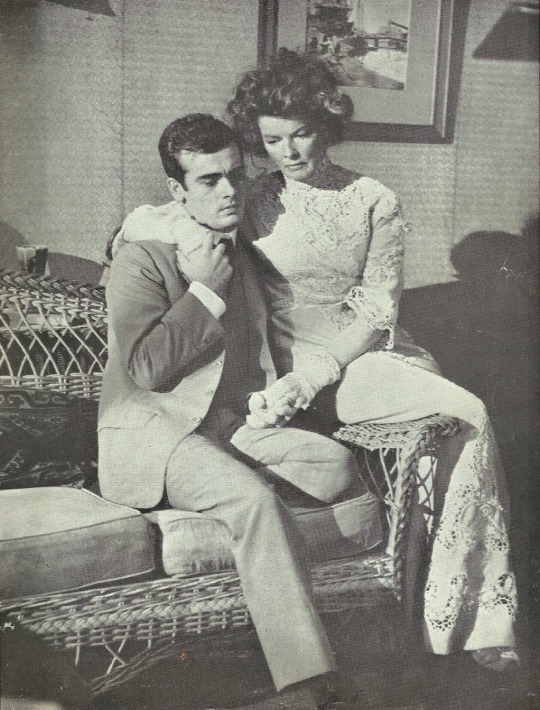
Long Day's Journey Into Night, 1962
5 notes
·
View notes
Text
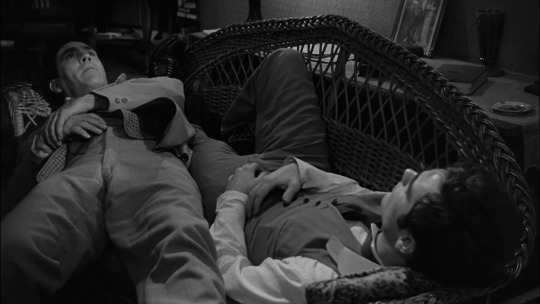

Long Day's Journey into Night (1962)
Jason Robards as Jamie Tyrone
Dean Stockwell as Edmund Tyrone
directed by Sidney Lumet
cinematography by Boris Kaufman
10 notes
·
View notes
Text
The Day Necromancers Rejoice Their Gift
Good evening, vampire hunters.
Heliotrope Journey: Son of a Hustler has resumed development and tonight, I’ve started sketching a goblet-shaped urn that will first be seen in LionHead Mansion. It could use a couple of skulls.

The mansion was not always the grim edifice that a small number of guests decide to lodge in. Before Frederick and co. departed for Baudelaire City in The Heliotrope Chronicles, our hero attended a party hosted by a wealthy student to celebrate her graduation from a college in Amherst. LionHead Mansion once had a separate wing that contained a Renaissance-styled ballroom and an underground fountain beneath its floors. This section was reserved for special events at prices only the upper class would be privileged to set their feet in. Business flourished at the venue until the night Frederick attended the party. A fallen angel he had been seeing accompanied him, was unwittingly tasked by Dracula’s adoptive son, Azrael, to slay the graduate the party is honoring. The last the girl, Abigail, was seen was when she headed to the bathroom to brush her hair. The next thing a classmate saw where she stood was ash in front of a sink.
Save for her, Frederick, Jill, Franz, and Abigail’s mother, every guest had gotten intoxicated from the beverages served. They were not initially alcoholic, but while the fallen angel followed Abigail, some of the spectres serving Azrael had laced an herb into the drinks that changed them into rum to prevent detection. Police were summoned and intoxicated guests were taken into custody. It was later discovered that Abigail’s father died under the same circumstances. The fallen angel discovered Azrael’s ruse shortly after Frederick returned to his room. Dracula was still considerably weak from the events of 1962 and his short encounters with Frederick, Eforie, Taner, Idyia, and co. have done little to ease his ailing strength.
The souls that belonged to father and daughter will give the Dark Lord the nourishment he desires to begin his plans to conquer the wizarding school on Mt. Greylock. Try as this fallen angel may to impede Azrael, he disappears into the night. To make up for his involvement, he sought vengeance on the Veiled Nocturne and vowed Frederick should join his efforts. He contemplates transforming the boy into a demon to give him a better advantage against human foes and while he slept, he fused his soul with a slain creature from the Inferno. Before the transformation could be completed, though, Sidiyq Qadim attacked the fallen angel and a brief battle between them woke Frederick up. He sided with his long-time friend and the angel, heartbroken and betrayed, had vanished. He has not been seen that night.
The next day, the headmaster of the school on Mt. Greylock, having learned about the tragedy of two innocent non-magic lives, launched an attack on the necromancers living in the mansion with four members of the faculty and select members of the Order of the Dragon by his side. The wing was destroyed in the battle, weapons and grimoires were plundered, and spirits were shriveled up by holy relics. The mansion’s purpose as a necropolis still lingers, but until that incident, it was cleverly concealed from the mortal world by its compliant staff. Michaela does not dwell on its history nor the events that led to the ballroom’s demise during her eventual stay, but her involvement will mark the death of an abductor and another soul that will never sleep again. Einsam was, however, spared when Michaela saved him.

Treyton will certainly need lots of it after surviving another encounter with a solomonari-in-training on All Saints Day aka the Scholomance’s Admission Day. Now inside the cemetery's chapel, he and his new friends are dangerously close to the entrance of the Scholomance and it is here where the boys must stick together even if the odds of winning this fight is looking slim. Confused about what’s going on? Please refer to the stories written last year and the year before that to help get you up to speed. Spoilers below. Photo by Nazrin Babashova on Unsplash.
“Dude, that was close.” Mitica said after he and Treyton shut the colossal doors. “That bastard’s minions nearly laid a hair on you.” “We’ve walked right into a corner.” Treyton was not excited to celebrate. Homer had them and Miron surrounded in the graveyard moments ago. The vampire boy’s dark magic was only effective enough to hold them back. Treyton had no magic on him and Mitica is incapable of performing area attacks with his wind magic. The philosopher’s stone was as good as gone. “Regardless of your complaining,” Miron said. “We’ll have to stay in here until sunrise. The boy wizard’s sorcery is at its peak when the autumn air is this crisp and the night is so dark.” Treyton looks at the doors and his surroundings. The bleak orange color on the statues and the polished bricks did not improve his mood. He felt anxious about coming inside the chapel. “Then what are we going to do for supper?” he asked. He saw no point about arguing what could’ve been done. “Anyone want to share a cup of blood?” Miron offered. “If we can find an altar room, there may be a goblet I can drip it in. Then I wouldn’t be by myself when the rest of the populace succumbs to old age.” Mitica didn’t say a word. It is as if he had no objection and will gladly join his friend in eternal life. Treyton, using his better judgment to refrain from poison, took a step back. “I’m just going to tear apart the bricks to find a practical substance.” He walked down the hall to his right. None of the boys have been inside the chapel in their lives so Mitica and Miron followed him.
Treyton’s sword was strong enough to cut through stone so looking for food in the walls did not seem to trouble him. Miron found a goblet of blood spilled on the floor and licked it up like a dog drinking from a bowl. Mitica was in no mood to do the same so he ate a piece of fresh bread that was tucked behind a cracked brick in the wall next to a hooded statue. Treyton didn’t find much, but a bronze amethyst-crested chalice containing a vanilla milkshake, a green apple, and a sponge cake simmered his appetite for a while. He continued to walk. “Are you still hungry?” Miron worriedly asked the boy. “No, I’m good.” Treyton answered with a stubborn look on his face. “That was just what I needed.” “But you didn’t eat enough.” Miron walked a little faster until he was next to him. “You sure you don’t want my blood?” “Are you gross? No!” Treyton answered. “And quit offering me blood. I can’t stand the smell nor can I think to taste it.” “Okay, then.” Miron broke one of the tall candelabras with his axe. “But don’t get mad at me if we can’t find any more treats.” “It’s always been the least of my problems so I won’t.” Treyton said. “That’s enough from both of you.” Mitica touched Miron’s shoulder. “We haven’t been in here in our lives and we have yet to find a place to rest with three dark wizards chasing us. We’ll become easier targets if we are at each other’s necks.” Treyton stops in his tracks. A skull, tucked into a corner, was glaring right at him. “Our predicament could be worse anyway.” He sighed. “We have yet to die in here. Someone already has.” “I don’t see why a few bones laying around is a concern.” Miron shrugged. “Perhaps the caretakers believe it is appropriate to use them as decorations. I feel like a party crasher.” Treyton picks up a rib once the boys enter a chamber that contains the statues of beggars that have presumably stayed in the chapel during Humanity’s Abrogation. “The bones aren’t made of clay, stupid.” He said. “Not once have I seen one laying around in Teodosie.” “It’s abandoned….” Mitica rightfully concluded.
“No, it’s been visited.” Treyton theorized after picking up another skull. “These bones wouldn’t be here otherwise.” “Or there were refugees from the anarchy that could have barricaded themselves in here and perished from starvation.” Miron stroked his cheek while breaking another candelabra. “You’ll be joining them shortly, gentlemen.” The voice of a young female echoed abruptly. The sly solomonari-in-training, Hedi, emerged from a stone coffin and unsheathed her dagger. “Hand over the stone and I’ll treat you to a proper supper. Promise.” “Okay.” Treyton picks up a lemon-colored limestone from the floor and hands it to Hedi. “What do your kind eat when you’re hiding from Hemera?” Hedi looks over the stone and crushes it with her fist. “Not that stone, you idiot!!!” she growled. “The Philosopher’s Stone. Don’t make it any harder than it has to be.” “You came alone, did you not?” Treyton stared at her. “How can you possibly make this harder?” “Watch me.” Hedi jumped onto the coffin and stabbed her dagger into a statue of a sad-looking saint. It quickly dissolved into rubble and from that pile emerged a flock of flying statue heads with bat wings to give them flight and a single hand where a neck should be. “A little bit about me before they make you fork over the stone; the ability to command cherubim was taught in my favorite course in the Scholomance. It is an elective for some of us with promise to devote our services to Mother Earth.” Though Treyton was listening, his friends were too occupied with finding a place to hide from the flock to listen. He looked at one rogue cherub charging at him from above. “I’d surrender if I were you. Their grips will shatter your bones into dust.” Treyton jumps toward the cherub, points his sword at it, and smashes it into pieces. “I’ll pass, thank you, miss. Obliteration of the dark arts is my specialty.” Hedi did not look convinced. The cherub statues were approaching the boys in increased numbers. Treyton stared coldly at them and gripped his sword while Mitica and Miron were cornered in a lower level where a cherub is about to headbutt one of them. “Now say it again.” She goaded. “Obliteration of the dark arts is my specialty. That doesn’t need repeating, you witch.” He swung his sword at the approaching cherubs, splitting them in half and causing their remains to fall to the floor. Treyton, confidently, ran after the cherub that grabbed Mitica in the back and attempted to drag him away. Hedi watched as the flock slowly swarmed her foes. She was neither contented nor disappointed. She kept her dagger out, waiting for a slip up in her plan. It won’t be long before Treyton realizes where the increase numbers are coming from, but as soon as his friends tire out, she will make her move and steal the Philosopher’s Stone. One of the two is bound to have it and for the first time since Dracula’s fall, the Veiled Nocturne will have a more permanent leader.
Sincerely,
WN
#halloween 2022#all saints day#witchcraft#scholomance#dark magic#treyton#michaela#worldbuilding#darkness#creative writing#day of the dead#vampirism#sketch#traditional art#digital art#writers on tumblr#frederick#necromancy#angels and demons#cherub#sneak peek#solomonari#chapel photography#pencil and paper#backstory#lionhead mansion#pixel art#artists on tumblr#dark fantasy#gothic storytelling
2 notes
·
View notes
Text
Space News!!!
Introduction
Space is the final frontier, and we're learning more about it every day. From new moons to missions to Mars, here are some of the biggest space stories from this week:
Elon Musk's SpaceX successfully test launched the Falcon Heavy to Mars.
The Falcon Heavy is the most powerful rocket in the world, capable of lifting more than twice the payload of any other rocket in its class. It's also capable of taking off from Kennedy Space Center and landing vertically on Earth again (or even returning to land).
Falcon Heavy was launched on its maiden flight during a test flight that began at 9:45 p.m. ET on Wednesday night, according to Spaceflight Now. The launch took place at Cape Canaveral Air Force Station in Florida where it was built by SpaceX—the same company that owns Elon Musk's Tesla electric car company as well as his private space exploration firm named after his youngest son, "Space Exploration Technologies Corp."
Artemis 1 Timeline
The Artemis 1 mission is the first manned mission to the Moon, and it will be launched on 29th of August 2022. You've probably heard about this already, but here's a quick refresher: NASA has selected three teams from around the world that have been chosen as members of this historic mission.
The Artemis 1 will return to Earth after spending seven days on its journey around our planet (and maybe even more if we get lucky).
NASA has announced the next Discovery class mission will be called Lucy, and it will explore Trojan Asteroids.
It's an exciting time in space. NASA has announced the next Discovery class mission will be called Lucy, and it will explore Trojan Asteroids. The mission is expected to launch in 2023, using a solar-electric propulsion system to explore Trojans.
The principal investigator for this exciting new mission is Harold Levison, who has worked on other NASA missions like New Horizons, which led us all over Pluto!
The Mariner 2 mission launched on 26 August 1962 and flew past Venus, becoming the first spacecraft to make a successful planetary encounter.
The Mariner 2 mission launched on 26 August 1962 and flew past Venus, becoming the first spacecraft to make a successful planetary encounter. The spacecraft was sent into orbit around Mercury in 1965, but did not meet its objectives because it lost contact with Earth at some point during its journey.[13] This failure led NASA to develop the Mariner 3 project where they tried again by sending another probe deeper into space than ever before.[14]
Juno completed its 5th flyby of Jupiter, returning close-up images of Jupiter's north pole.
Juno is a NASA spacecraft, and it has been orbiting Jupiter since 2016. Juno completed its 5th flyby of Jupiter, returning close-up images of the planet's north pole.
Juno was launched in 2011 and entered orbit around Jupiter in July 2016. It is still gathering data on the giant planet's atmosphere and magnetic field, which will help researchers understand what causes some of the most intense solar storms ever recorded on Earth (and possibly also how such storms might affect life here).
We're learning more about space exploration every day!
Space exploration is one of the most exciting and important things that humans do. It’s also an excellent way to learn about the world and universe around us, which makes it a great educational tool!
The space industry has grown rapidly over recent years, with more than 15% growth in 2016 alone. This growth can be attributed to increased public interest in space exploration, as well as technological advances that have made it easier for companies like SpaceX (Space Exploration Technologies Corporation) or Blue Origin (Jeff Bezos-led private company) to create their own rockets.
Conclusion
We've come a long way since we first started exploring space. From the Mariner 2 mission, to today's advances in technology and exploration, there's no limit to what we can do here on Earth when it comes to learning about our solar system.
5 notes
·
View notes
Text
The Beatles First American Tour
Over more than half a century as a writer for the London Daily Express and the Times of London, British-born Ivor Davis covered major stories in North America. He penned a weekly entertainment column for the New York Times Syndicate for over 15 years, interviewing some of the biggest names in show business, from Cary Grant to Elizabeth Taylor, Richard Burton to Tom Cruise and Muhammad Ali.
In 1962 he was smuggled onto the campus of the riot-torn University of Mississippi when James Meredith became the first black student to be enrolled --accompanied by 127 --yes 127-- US attorneys--Days of rioting followed with two killed--including one foreign journalist. Three years later Davis was in the front lines as Los Angeles’ Watts riots erupted.
In l964, Davis was the only British daily newspaper correspondent to cover The Beatles’ first American tour from start to finish, given unparalleled access to John, Paul, George and Ringo on the road, in their hotel, and during long nights of card and Monopoly games as they talked frankly about their bizarre new life. He also ghosted a regular newspaper column for George Harrison. His first-hand, insider’s memoir, the award-winning The Beatles and Me On Tour, 60th Anniversary Book, was published in February. It is a fascinating journey back in time where for the first time he chronicles, frankly and humorously, 34 days with the world’s most famous band on the road—at a critical moment in the history of rock. The anniversary edition was published on Feb 9th this year.
Davis covered Robert Kennedy’s 1968 presidential bid and was in the kitchen in the Ambassador Hotel the night Senator Kennedy was assassinated. He was one of the Boys on the Bus chronicling the life of actor-turned-politician Ronald Reagan, first in his campaign for governor of California, then for president.
He was a co-author of the 1969 political book Divided They Stand, which chronicled the Presidential election; and witnessed some of the biggest trials in American history: Sirhan Sirhan, convicted of killing Bobby Kennedy in 1969; black-power militant Angela Davis, acquitted of murder in l972; a year later, Daniel Ellsberg’s trial for leaking the Pentagon Papers, and, in 1976, he was in San Francisco to see heiress Patty Hearst convicted of robbery after being kidnapped by the Symbionese Liberation Army.
His new true crime book, “The Devil in My Friend: The Inside Story of a Malibu Murder.” It is an account of the famous Eighties trial of Malibu engineer Frederick George Roehler, who was convicted of the murder of his wife and young stepson after an almost year-long trial in the Santa Barbara Courthouse in May l982. The killings took place close by—at Santa Cruz Island. The new book will be published this year on May 7th.
https://ivordavisbooks.com/
Connect more:
https://www.chonacas.com/podcast/
https://www.instagram.com/shesallovertheplacepodcast/
https://www.linkedin.com/in/katiechonacas/
I hope you enjoyed the episode, please share with one person!
Please leave a 5 star & review on Apple Podcasts as it supports me as an Independent Podcaster :) Thank you! Katie xo
Check out this episode streaming now in over 100 countries
0 notes
Text
Dean Stockwell interview from 2004.
Las Vegas Weekly
DEAN STOCKWELL AT THE FIFTH STAGE: FROM GREEN HAIR TO QUANTUM LEAP, CIGAR-SMOKING ACTOR HAS CARVED OUT A DISTINCTIVE CAREER
Jeffrey Anderson Thu, Jun 10, 2004 (midnight)
Biographers will have an easy time with Dean Stockwell. The actor's career breaks very neatly into four parts: child actor, young man, hippie, and character actor.
Born into a showbiz family in 1936 in Hollywood, Stockwell made his movie debut at age 8 in the MGM musical Anchors Aweigh. During a recent telephone interview, he says he doesn't remember his first day of work, but does remember that he didn't like it much.
"I found myself in a very weird world, this moviemaking. I was expected to do the same caliber of work as the adults, and at other times I would be reminded that I was a child. It was difficult. I could do the work but I didn't like it. Other than two comedies and The Boy with Green Hair, I didn't enjoy acting at all."
The Boy with Green Hair (1948) was a bizarre, passionate anti-war film that changed many people's lives. In it, 12 year-old Stockwell plays a war orphan whose hair turns green as a symbol for war orphans everywhere. The film marked the directorial debut of the celebrated Joseph Losey (The Servant, The Go-Between). "He was a very sweet man," Stockwell says. "I remember he gave me a puppy. It was a little dachshund and I named him Thief."
Stockwell notes that the film came "at a time when there was a very influential right wing that created the blacklist. This was prior to the McCarthy witch-hunts. Losey went to England and never came back. While the film was being made, I was unaware of that. I only found out about it years later. What did affect me was the content of the film. I took it very seriously. The other ones were just dropped in my lap, but I was very proud to do this role."
The actor dropped out of the movie business to go to high school, but re-emerged in his 20s. "I didn't have any training to do anything else in life," he says. He received some acclaim for his performances in Compulsion (1959) and Long Day's Journey Into Night (1962) before entering the "hippie" phase of his career, epitomized by the San Francisco Haight Street movie Psych-Out (1968).
It wasn't long before Stockwell burned out again, eventually moving to New Mexico and acquiring his real-estate license—though he never used it. "I was feeling pretty depressed," he says. While working on a "stupid Mexican 'B' movie," Stockwell learned that David Lynch was making Dune and managed to get an introduction.
"He said, 'I thought you were dead.' He had confused me with the kid who was in Shane," Stockwell says. (Brandon de Wilde died in a car accident in 1972.) Initially rejected, Stockwell landed the part of Dr. Wellington Yueh after another actor dropped out. Later that year, a film festival in Santa Fe put him in touch with Harry Dean Stanton, which led to his illustrious role in Paris, Texas.
"I never really liked acting until I was in my 40s," he says of this new period of creative character roles, which also included To Live and Die in LA, Blue Velvet, Tucker: The Man and His Dream, Jonathan Demme's Married to the Mob —his favorite role, for which he received an Oscar nomination—and the popular cult TV show Quantum Leap.
For Lynch's Blue Velvet, he based his role of the bizarre, effeminate Ben on Carol Burnett. "I told her about it to her face and she loved it. Funny how things work."
Demme also recently cast him in a "teeny, little part" in his new Manchurian Candidate remake. "I think it could be hot," Stockwell says.
It also was during this period that Stockwell's signature cigars started popping up from time to time, notably on Quantum Leap. "The cigar made its debut in Kim," he says, speaking of the 1950 film he made with Errol Flynn, based on the Rudyard Kipling novel of the same name. "I guess it was in the book; my character smokes these little cigars. I started smoking them for real years later in Nicaragua."
Now Stockwell has embarked upon what could be his fifth career stage as an artist. "I'm making collages and prints out of computer-made pieces. I'm having an exhibition in Taos, New Mexico, at the RB Ravens Gallery in September, and then another one later in Monterey [California]. There are 42 pieces in the show," he says proudly.
In a business where most child actors burn out quickly, Stockwell has shown remarkable staying power, especially with very few role models to learn from in his childhood. "I attribute it to good fortune and fate," he says. "It amazes me that I'm still alive and that I'm still working."
1 note
·
View note